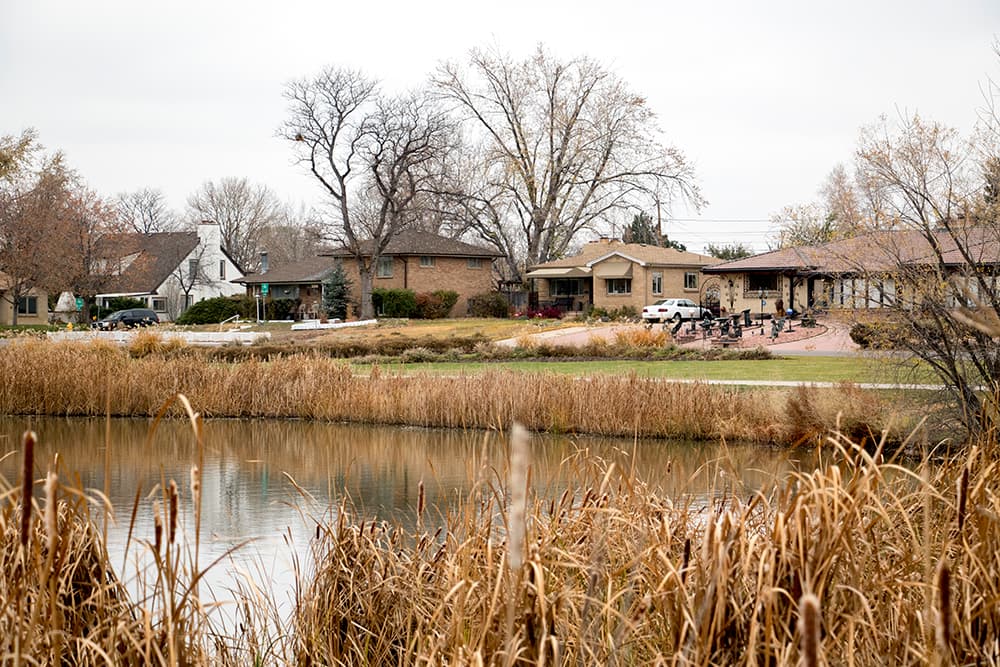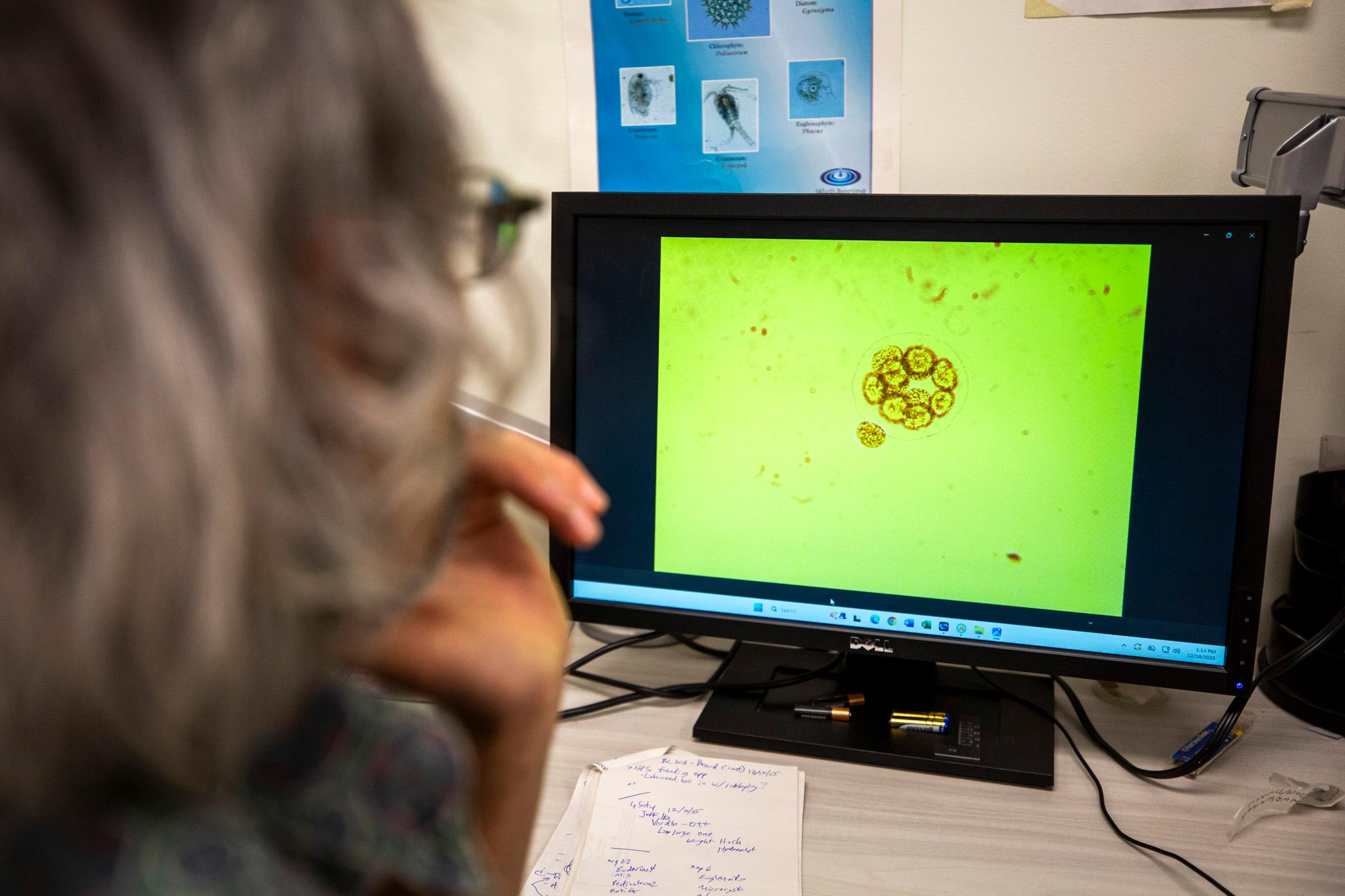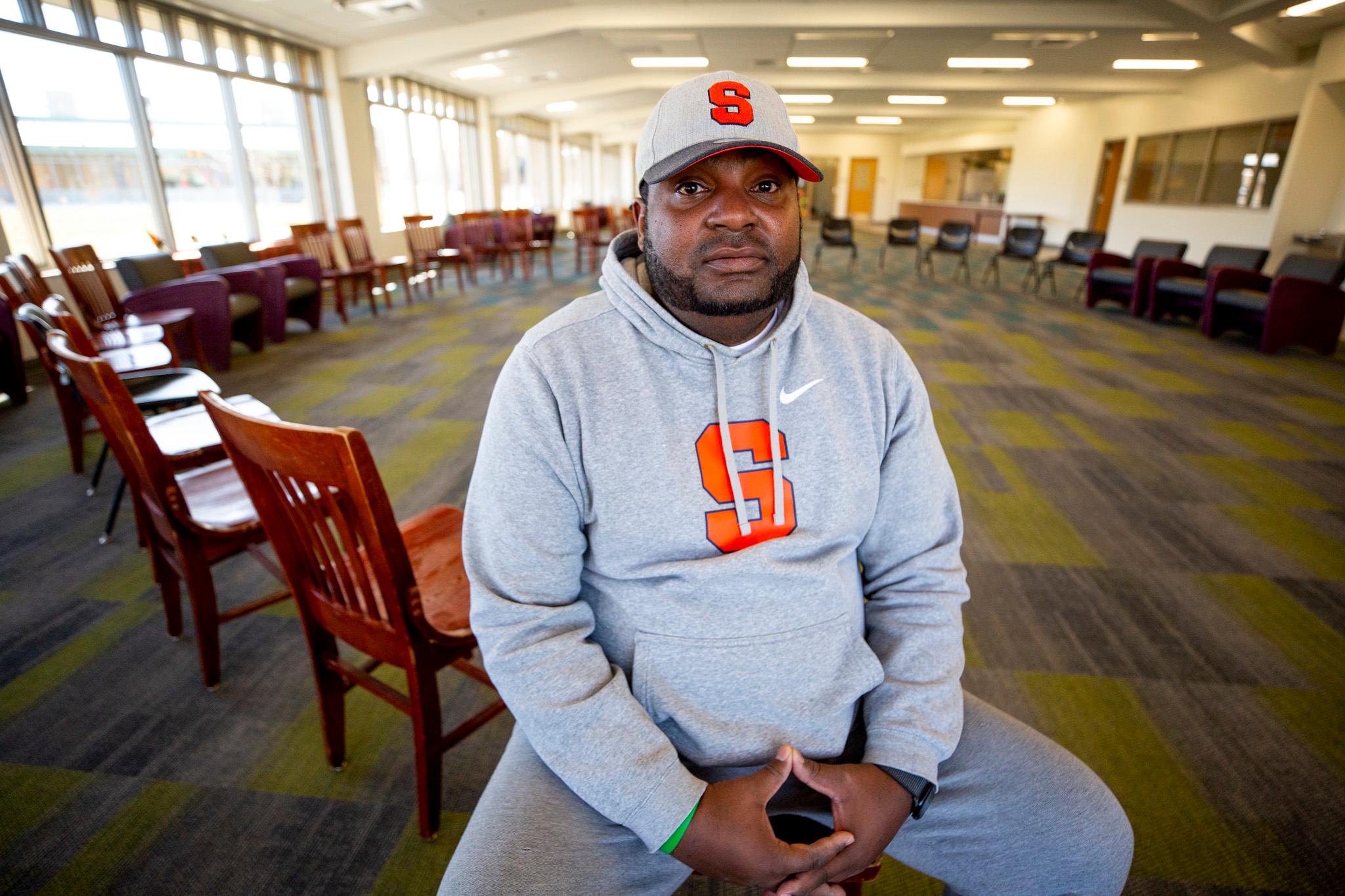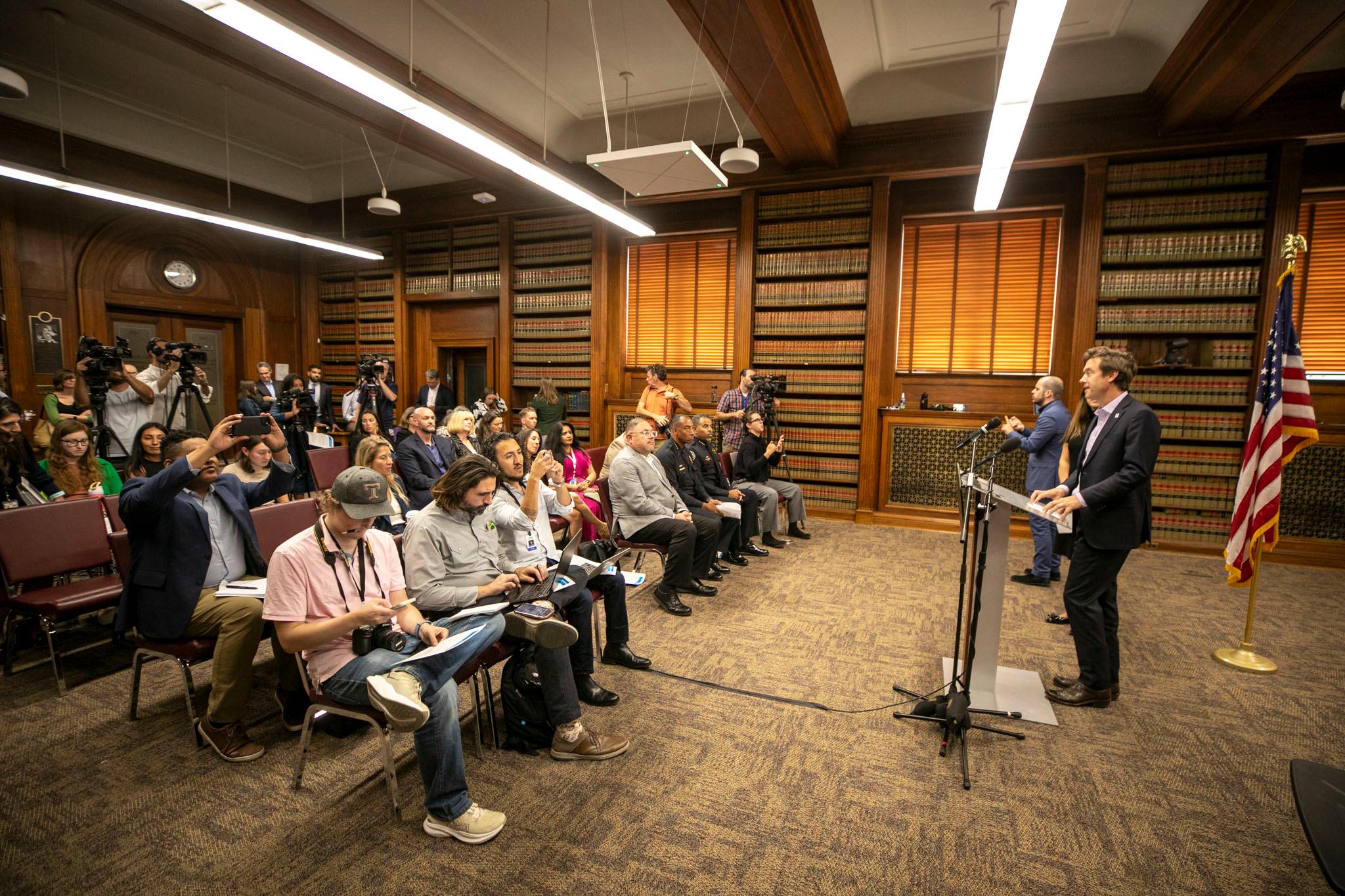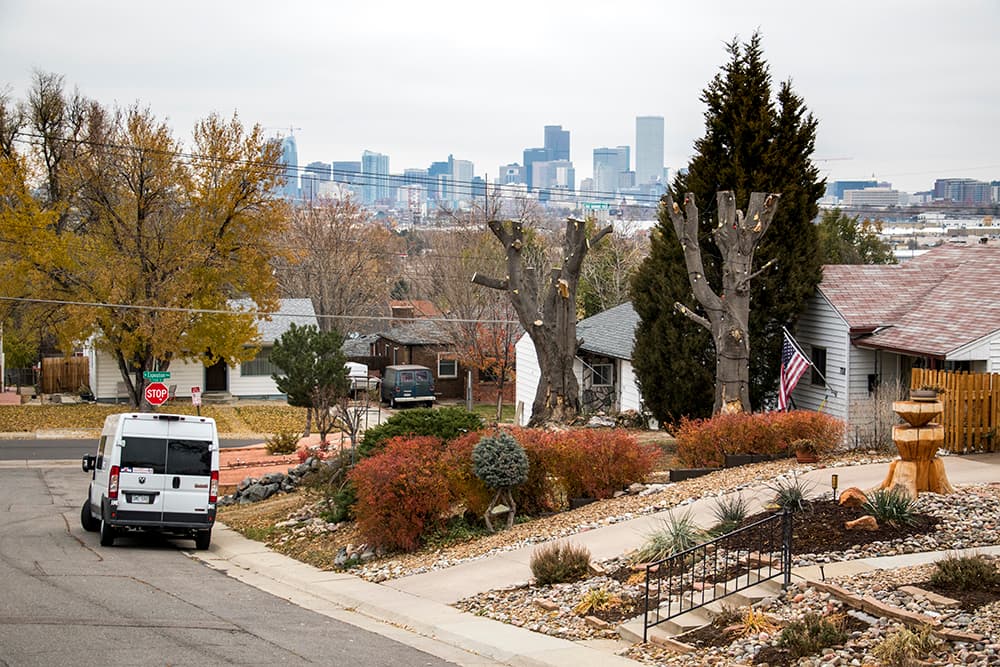
Councilman Jolon Clark and community leaders in Athmar Park are working on a plan that could bring tens of millions of dollars to Denver's aging southwestern neighborhoods -- and potentially start a philosophical change in how things get done in these sometimes neglected parts of town.
It started on a field trip to southern Denver. Riding on a bus with his fellow Denver City Council members, Clark looked out his window and saw wide sidewalks, "perfectly manicured trees, tree-lawns without a single weed," he said this week. "I was immediately upset."
See, Clark represents a suburban-style stretch of Denver built largely in the 1950s and 60s. Often, his district's sidewalks are nothing but narrow extensions of the curb, Clark said.
"We’ve got a hodgepodge of sidewalks that are in between 40 and 60 years old. My daughter broke one of her front teeth … trying to ride a scooter down our street," he told Denverite.
It can feel to residents as if these mid-century residential areas are caught in the middle: They don't have the amenities of large new subdivisions, but they also aren't seeing the same massive investments as the urban center.
"The theme that’s been going on for a very long time is being left out," said Ian Harwick, president of the Athmar Park Neighborhood Association. "People go on the other side of the river and say, 'These people have street trees and stop signs where they want them. The west side gets left out.'"

Here's the thing.
As Clark discovered, a lot of the money pouring into projects around the city doesn't actually come from the city.
It often comes from the districts -- pseudo-governmental organizations organized as business improvement districts or general improvement districts that collect extra property taxes. They've multiplied in Denver lately. The largest have budgets approaching $1 million per year, and they're using it to take out tens of millions in debt for everything from sidewalks to marketing.
So far, it's happened mostly in brand-new residential areas like Stapleton or in redevelopment zones like Cherry Creek, Five Points and downtown.
And they've proven to be effective and influential: Colfax Avenue improvement districts managed to convince the city to set aside $20 million for sidewalk upgrades in the recently approved 2017 bond package, and one of these BIDs will use its spending power to throw in another $2.5 million.
Now, neighborhood leaders may take that power into their own hands.
Clark and others are working on a proposal that could bring a new pseudo-government to Athmar Park and even to surrounding neighborhoods.
The neighborhood association hired the consulting firm Centro to survey residents and start planning for the potential district.
Centro also helped create the districts in RiNo, and it's working on potential new ones for Ballpark and for Golden Triangle.
The plan could generate millions.
If the neighborhood board approves, Athmar Park residents could vote as early as next fall on whether or not to form a district. If that effort passes, property owners would start paying an extra tax to fund a new organization.
"We would go to them and ask them if they wanted a property tax. With that money, we could start on these improvements Jan. 1 of 2019," Harwick said.
The early plan would be to ask for roughly $60 per household per year. That would let Athmar Park take on about $6 million worth of debt over 30 years, Harwick said. Doubling the tax would double the amount of debt they could take on. They could also use that money to convince the city and other groups to chip in money for projects.
"The main request of my neighbors through all of our outreach has been ways to slow speeding, add wider sidewalks, bring about park improvements like restrooms and lighting," Harwick said.
The money also could be used to improve the neighborhood's access to the South Platte River, according to consultant Jamie Licko.
Finally, there's interest in finding a way to "help avoid displacement" of residents, including by bringing new housing to the area, Harwick said.

This could represent a significant shift for Denver.
"There’s nobody around here, especially a neighborhood, that has gone this route," Harwick said. And it's not just Athmar Park. Other neighborhoods around southwestern Denver are exploring the concept too.
Special districts are allowed to buy or build "any public improvement" except trash disposal services, according to the city. Many new subdivisions already do something similar, but it's uncommon in older neighborhoods.
The Denver City Council has authority over the districts, but they usually appoint neighborhood boards to run much of the show.
"If this succeeds, there may be a lot of other neighborhoods that want to do a similar thing," said Licko, president of the consulting firm Centro and of the RiNo Art District.
"As cities grow and cities age ... the resources get spread thinner and thinner," she continued. "Cities provide a baseline level of services, but they can't afford to target specific, individualized needs."
In short, districts allow small areas to get stuff done when the central government can't.
This comes with some concerns.
A paper from Cornell University's department of planning laid out some of the arguments for and against improvement districts.
Districts may "encourage a model of public service provision where services are provided based on an area's ability to pay," they wrote, summarizing criticisms of the model.
They might therefore create "cycles of inequality in which areas with better services attract more business and profits while under served areas continue to deteriorate." And if a neighborhood's residents know that they can self-fund improvements, they might stop supporting city-wide spending, the authors wrote.
Speaking to Denverite, Clark made the counterargument: Denver's already unequal, he said, and districts can rebalance that.
"The truth of the matter is we have inequities right now because of these historic issues of how things were developed, and we have inequities because there are already parts of the city that do have this," he said.
"If we can’t find a way to make this happen, Athmar will continue to be at a disadvantage."
This post was updated with new financial numbers about the potential new district from Harwick.
